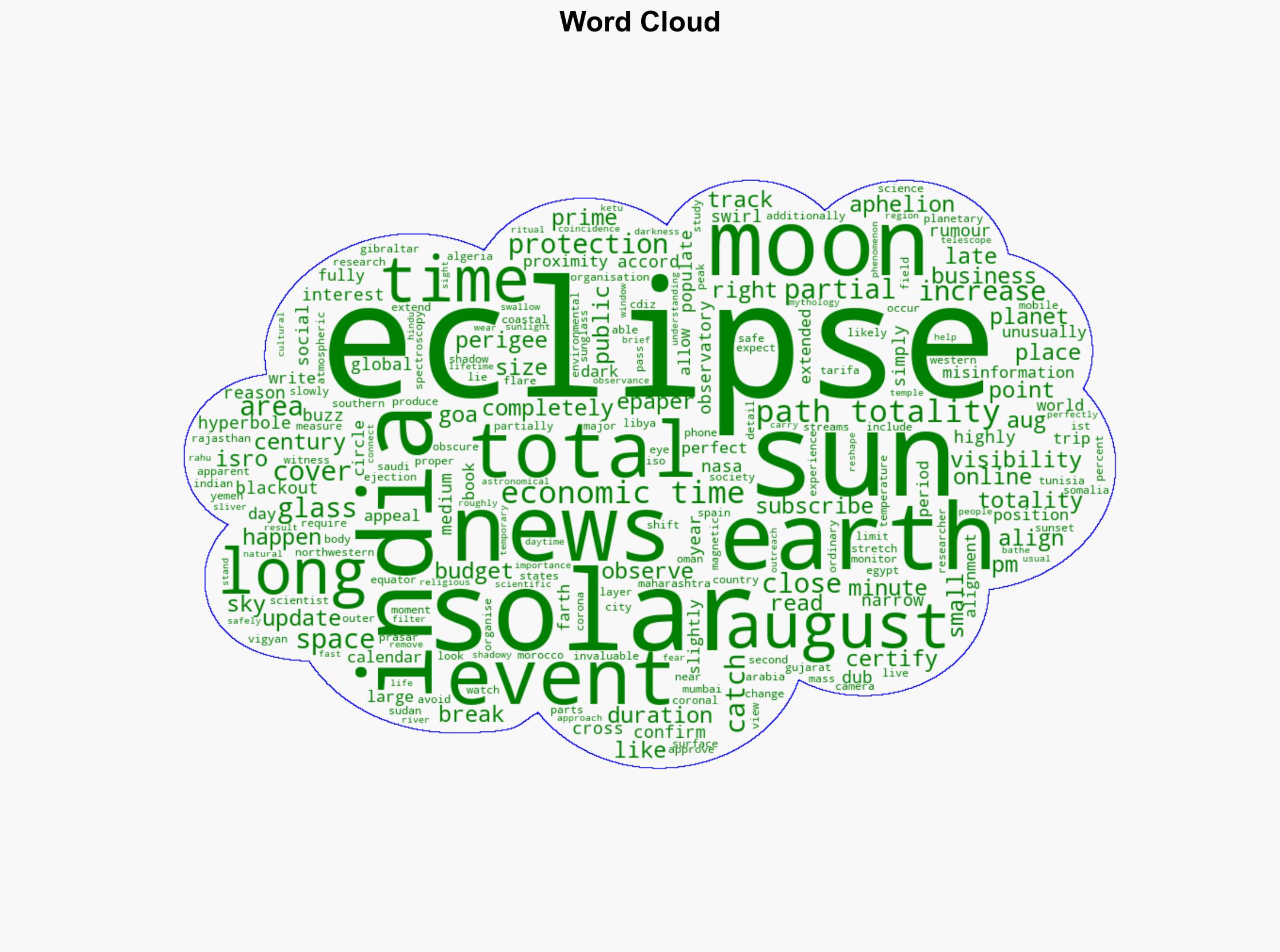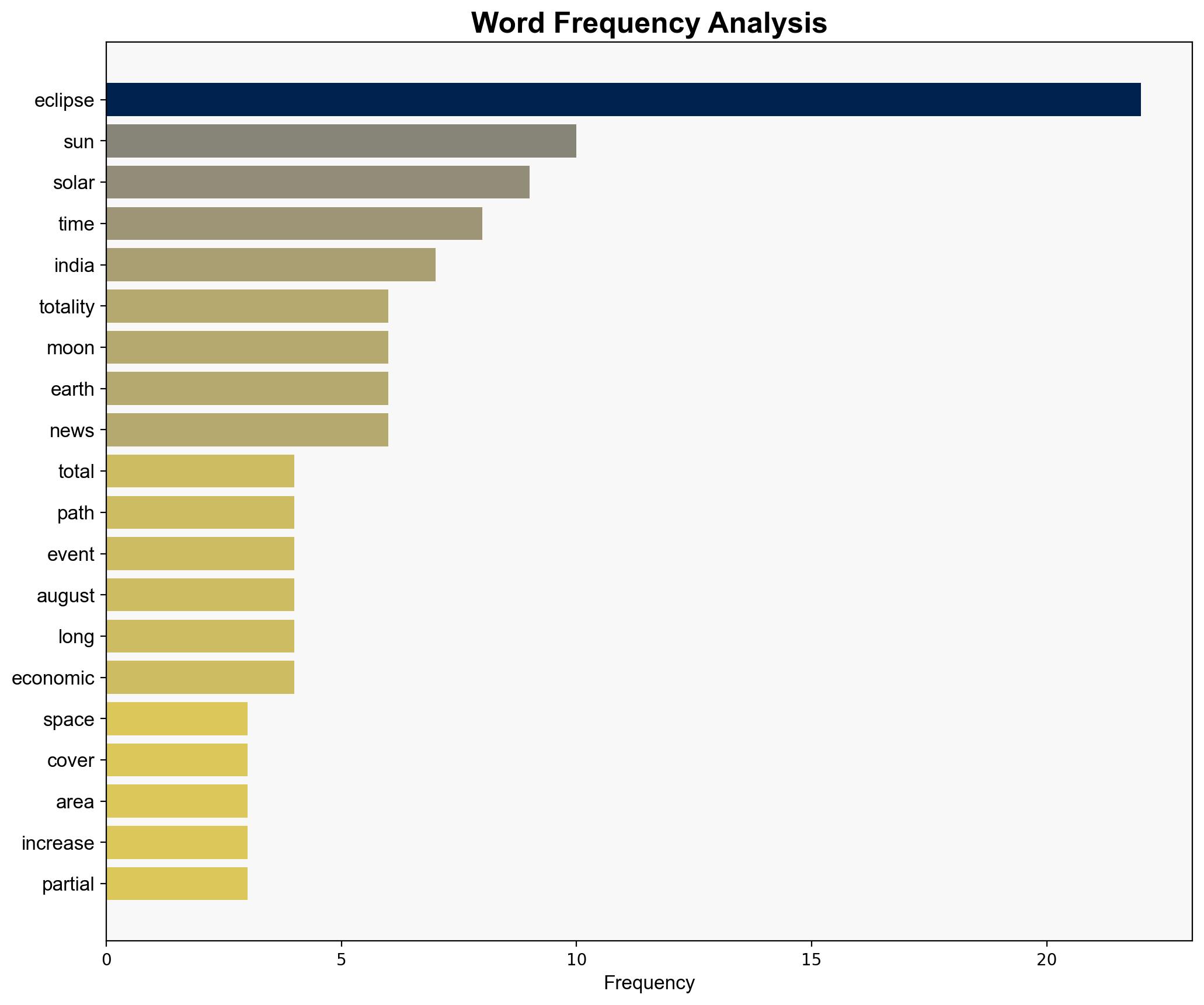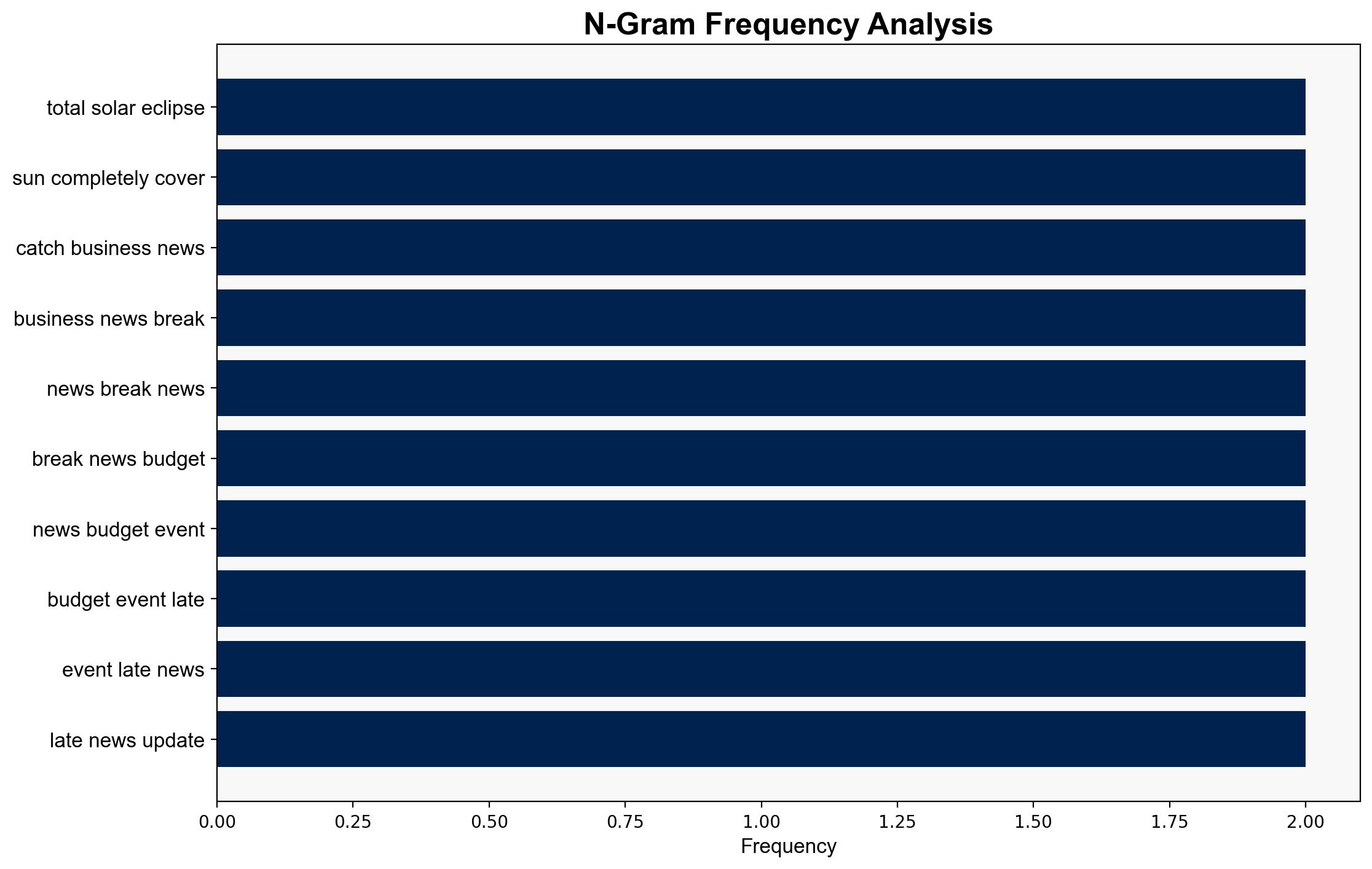Longest solar eclipse of the century will happen on August 2 Six minutes of darkness in the afternoon Whats really happening – The Times of India
Published on: 2025-07-27
Intelligence Report: Longest Solar Eclipse of the Century on August 2 – Analysis
1. BLUF (Bottom Line Up Front)
The upcoming solar eclipse on August 2 is a significant astronomical event, not a global blackout as misinformation suggests. The most supported hypothesis is that the eclipse will be a natural occurrence with scientific and cultural significance, rather than a disruptive event. Confidence level: High. Recommended action: Enhance public awareness and scientific outreach to counter misinformation and leverage the event for educational purposes.
2. Competing Hypotheses
1. **Hypothesis A**: The solar eclipse is a natural astronomical event with extended duration due to specific celestial alignments, offering scientific and cultural opportunities.
2. **Hypothesis B**: The eclipse is being misrepresented as a global blackout event, potentially leading to public panic and misinformation spread.
Using ACH 2.0, Hypothesis A is better supported by the data, including NASA confirmations and scientific explanations of the eclipse’s duration and path. Hypothesis B is primarily fueled by social media rumors and lacks credible scientific backing.
3. Key Assumptions and Red Flags
– **Assumptions**: Hypothesis A assumes accurate scientific data and public access to reliable information. Hypothesis B assumes susceptibility to misinformation and lack of scientific literacy.
– **Red Flags**: The spread of misinformation on social media platforms is a significant red flag, indicating potential public misunderstanding or manipulation.
– **Blind Spots**: Potential underestimation of the cultural and religious significance of the eclipse in certain regions, which could influence public perception and behavior.
4. Implications and Strategic Risks
– **Scientific Opportunities**: The eclipse provides a rare chance for detailed solar research, which could advance understanding of solar phenomena.
– **Misinformation Risks**: The spread of false information could lead to unnecessary panic or economic disruptions, especially in regions with high cultural sensitivity to eclipses.
– **Cultural Impact**: The event may reinforce or challenge cultural beliefs, affecting social dynamics and public behavior.
5. Recommendations and Outlook
- **Mitigation**: Launch public information campaigns to clarify the nature of the eclipse and dispel myths. Collaborate with scientific organizations for accurate dissemination.
- **Opportunities**: Use the event to promote scientific literacy and engage the public in astronomy-related activities.
- **Projections**:
– **Best Case**: Successful public engagement and educational outreach enhance scientific understanding and cultural appreciation.
– **Worst Case**: Misinformation leads to widespread panic and economic disruptions in affected regions.
– **Most Likely**: A mix of scientific interest and cultural observance, with manageable misinformation impacts.
6. Key Individuals and Entities
– NASA
– Indian Space Research Organisation (ISRO)
– Vigyan Prasar
– Planetary Society India
7. Thematic Tags
scientific outreach, misinformation management, cultural impact, public education





